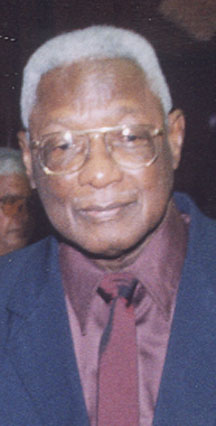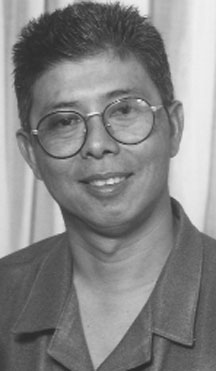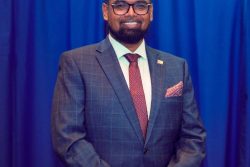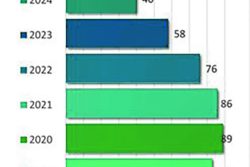Late former President Desmond Hoyte has not been given the accolades he deserves for reforming Guyana and lifting its economy out of the doldrums.
This was the contention of businessman Stanley Ming who delivered the 5th annual Desmond Hoyte Memorial lecture last Wednesday at the Pegasus Hotel.
Ming described Hoyte, who passed away in 2002 after presiding as President from 1985-1992, as an outstanding leader whose seven-year tenure was not enough to implement economic mobilization programmes thus bringing an untimely end to the macroeconomic vision he had for the nation.
Ming, who had a close working relationship with Hoyte, delivered his presentation under the theme “The role of Business in National Development- Hugh Desmond Hoyte’s relationship with the private sector.”

Members of the diplomatic community, politicians, businessmen, supporters and family members packed the Savannah Suite of the Pegasus Hotel to hear of a man whose reforms led to a democratic Guyana after more than two decades of autocratic rule.
Discussing Hoyte’s relationship with the media, the private sector, the public and with citizens, Ming delivered his presentation under the rubrics of democracy and development.
“Most of us take today’s freedoms for granted…his greatest contribution to Guyana was his approach to development through the principles and mechanisms of democracy” said Ming.
Quoting from the late leader’s speech at a dinner hosted by the Guyana American Council of New York in 1991 on his vision for Guyana, Ming noted that Hoyte wanted “To complete, as rapidly as possible, the evolution of Guyana as a country of free people, practising free enterprise in an open society. I hold the view that freedom and democracy are indivisible and that development that is sustainable and enduring is inseparable from freedom and democracy. It is with this deep conviction that my Government and I are striving to order our Nation’s affairs”.
According to Ming the late President has not been given the accolades he deserves since many politicians seek to belittle his contributions, merging his seven-year presidency with the 21 dictatorial years under the ‘iron fists’ of LFS Burnham. He urged those politicians to remember the state of affairs that Hoyte inherited before attempting to belittle him.

“Most of us …will remember that the Guyana President Hoyte inherited had the following characteristics: The burden of stifling, expanding foreign debt, an economy driven by the state which owned and controlled most major enterprises, price controls on several major commodities, a shortage of many essential products, very little foreign reserves, total control of foreign exchange transactions and severe restrictions on the Private Sector”, Ming said.
An Inter-American Deve-lopment Bank Country Report for 1991 was used to give credence to much of what Ming said of Hoyte’s Economic Recovery Programme (ERP), a plan aimed at re- introducing a free enterprise driven economy to replace the socialist oriented economic programme of previous years.
“Guyana is clearly on the road to global recovery…. There are sufficient lines of credit in the Banking System…the majority of State Enterprises have been privatized…. Rice production and commercialization have been liberated. Private Sector Enterprises, both national and international have been appearing more and more, with important investment in the mining sector; forestry and industrial activities. The construction industry is visibly reactivated.
“Over the past year, rice production has increased by 61 % and sugar 23 %….Nontraditional exports increased by 81 per cent in terms of tonnage….The monetary reserves are now at a level of (US) 112 million dollars and the real growth of the economy is that of 6.1 per cent for 1991.
“Of course, there is still much to do. But definitely much has been done, and has been done with will-power, decision and conviction” the report had said.
Complementing Hoyte’s Economic Recovery Pro-gramme was the 1996 Guyana 21 Plan crafted by businessmen across the country after much consultation with the public. Because of his experience as Minister of Finance and Minister of Economic Development, Ming said that Hoyte embraced it with the hope of propelling Guyana forward economically.
Elements of that plan included the construction of a bridge across the Berbice River with the associated development of a commercial district, a four-lane highway connecting Georgetown to the Soesdyke–Linden Highway, a highway from Parika to Monkey Jump on the East Bank of Essequibo and a deep water harbour and Export Processing Zone (EPZ) at the mouth of the Essequibo River among several other projects.
Holistically, Hoyte wanted the nation’s economic strides to be seen as “Guyana, the Singapore of Latin America and the Caribbean and a major transshipment hub for products into and out of Brazil, Venezuela and Suriname” the speaker noted. Hoyte lost the 1997 elections and as a result the plan did not take off.
Reflecting on the lawyer who wanted shared wealth, the people’s servant who only wanted to give his all, a friend who was always witty and had encouraging words, Ming noted Hoyte’s transformative vision and quoted him from the 1992 PNC Manifesto.
““For too long, our people have been bereft of happiness. The culmination of our efforts must be to return the smile to their faces, the spring to their steps, and the joy to their hearts. Ours must be the task to fashion a vibrant and wholesome society, at peace with itself and at peace with its neighbours; an economy that creates wealth, spurs development and provides continually expanding conditions for all our people to live comfortable fulfilling lives. A State, resting squarely on foundations of democracy and social justice, where within ever-enlarging bounds of human freedom, the rule of law reigns unchallenged and supreme. To this noble task, let us now unreservedly, commit…ourselves” Hoyte had said.







